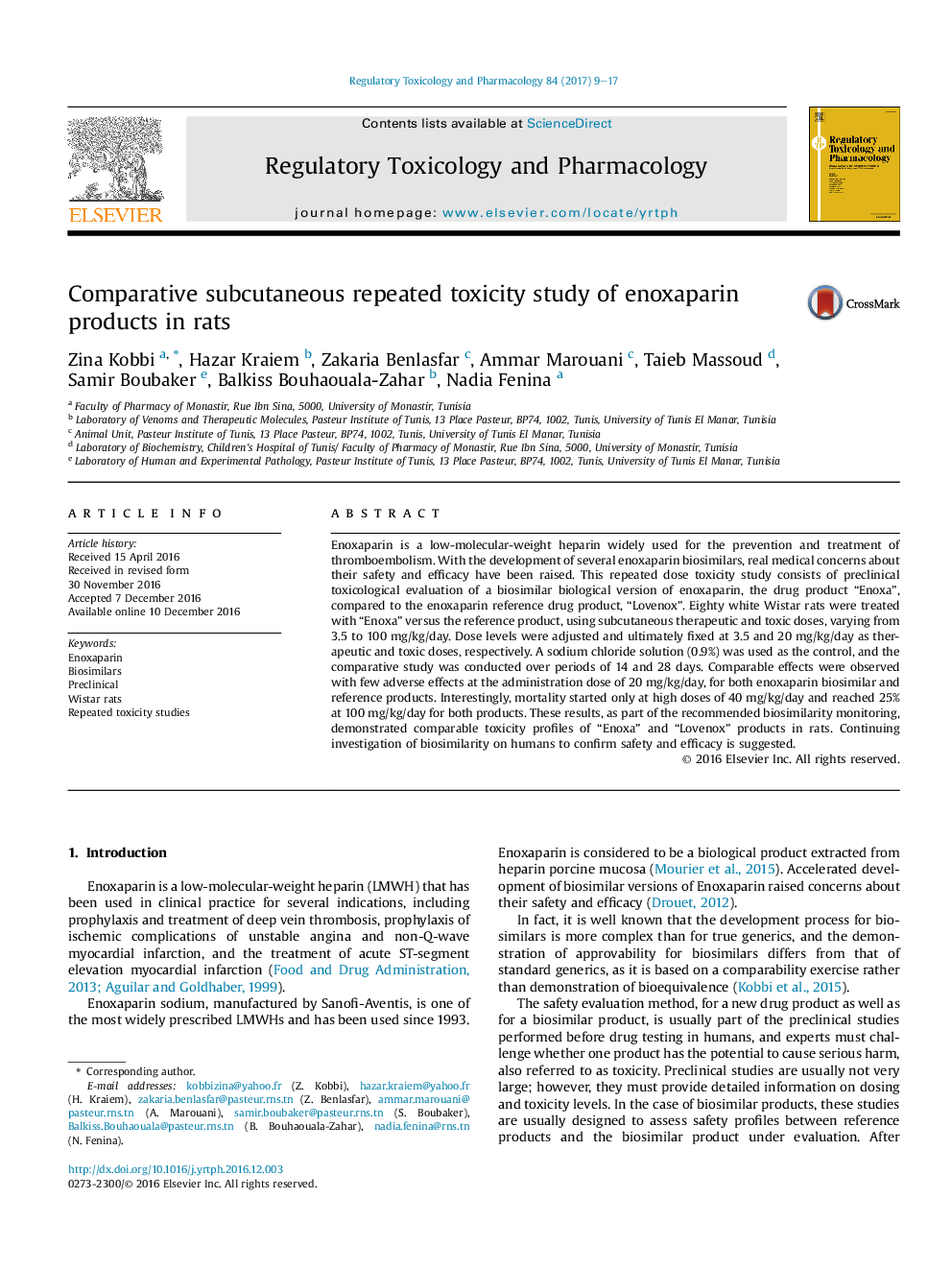| Article ID | Journal | Published Year | Pages | File Type |
|---|---|---|---|---|
| 5561396 | Regulatory Toxicology and Pharmacology | 2017 | 9 Pages |
â¢Comparative repeated study of enoxaparin toxicity in rats.â¢Recorded mortality started from 40 mg/kg/day dose.â¢No undesirable effects of 3.5 mg/kg/day and 5 mg/kg/day doses.â¢Comparable toxicity profile for the enoxaparin and reference products.
Enoxaparin is a low-molecular-weight heparin widely used for the prevention and treatment of thromboembolism. With the development of several enoxaparin biosimilars, real medical concerns about their safety and efficacy have been raised. This repeated dose toxicity study consists of preclinical toxicological evaluation of a biosimilar biological version of enoxaparin, the drug product “Enoxa”, compared to the enoxaparin reference drug product, “Lovenox”. Eighty white Wistar rats were treated with “Enoxa” versus the reference product, using subcutaneous therapeutic and toxic doses, varying from 3.5 to 100Â mg/kg/day. Dose levels were adjusted and ultimately fixed at 3.5 and 20Â mg/kg/day as therapeutic and toxic doses, respectively. A sodium chloride solution (0.9%) was used as the control, and the comparative study was conducted over periods of 14 and 28 days. Comparable effects were observed with few adverse effects at the administration dose of 20Â mg/kg/day, for both enoxaparin biosimilar and reference products. Interestingly, mortality started only at high doses of 40Â mg/kg/day and reached 25% at 100Â mg/kg/day for both products. These results, as part of the recommended biosimilarity monitoring, demonstrated comparable toxicity profiles of “Enoxa” and “Lovenox” products in rats. Continuing investigation of biosimilarity on humans to confirm safety and efficacy is suggested.
